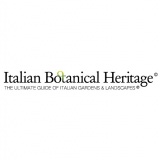
 Italian Botanical Heritage
Italian Botanical Heritage
Italian gardens and parks: Clitunno Springs
- WTI Magazine #143 Sep 18, 2021
-

 Italian Botanical Heritage
Italian Botanical Heritage
Clitunno springs (Fonti del Clitunno) stretch over a 2.5-acre area along Via Flaminia, between Spoleto and Foligno, in the municipality of Campello sul Clitunno, Umbria. The whole area is served by underground springs that flow from natural cracks in the rock.
There are two main outlets which actually feed the Clitunno River: the so-called “Sources”, consisting of a large spring area which also feeds the nearby lake (with sulphate-alkaline-earthy type of water), and the “Temple” spring, rich in bicarbonate and calcium; the latter feeds the aqueduct network and can be found next to “Tempietto di Clitunno” – “The small temple of Clitunno” (eventually turned into an early Christian church dedicated to Saint Salvatore, and still preserving its ancient frescoes).
As the name suggests, the springs were originally named after the Roman God Clitumnus; they were thus already highly appreciated in Roman times, celebrated by Propertius, Pliny and Virgil, while in more recent times they have inspired poets such as George Gordon Byron and Giosuè Carducci, as well as painters such as Jean-Baptiste-Camille Corot, Nicolas Poussin, Tommaso Minardi, and Richard Wilson.
It was Paolo Campello della Spina who gave the springs their current appearance, when he created a recreation park in 1852, encompassing the very area already celebrated by Pliny.
Flora and fauna
The site shows one of the best regional examples of hydrophitic vegetation developed in the spring area, for its richness of flora and state of conservation. The artificial lake is populated by watercress (Nasturtium officinale), water forget-me-not (Myosotis scorpioides), mare’s-tail (Hippuris vulgaris), common water-plantain (Alisma plantago), pond water-starwort (Callitriche stagnalis) and many other important species such as Hippuris vulgaris, a hydrophyte present in Umbria only in two other Italian areas, Myriophyllun spicatum, Myriophyllum verticillatum, and Carex acutiformis – rare species at regional level.
The shores are characterized by the dominant presence of black poplars (Populus nigra var. “Italica”) and willows (Salix spp.).
Fish species include brown trouts, arno gobies, crucian carps, common carps, vairones, horse barbels, common chubs, three-spined sticklebacks, lampreys, and South European roaches.